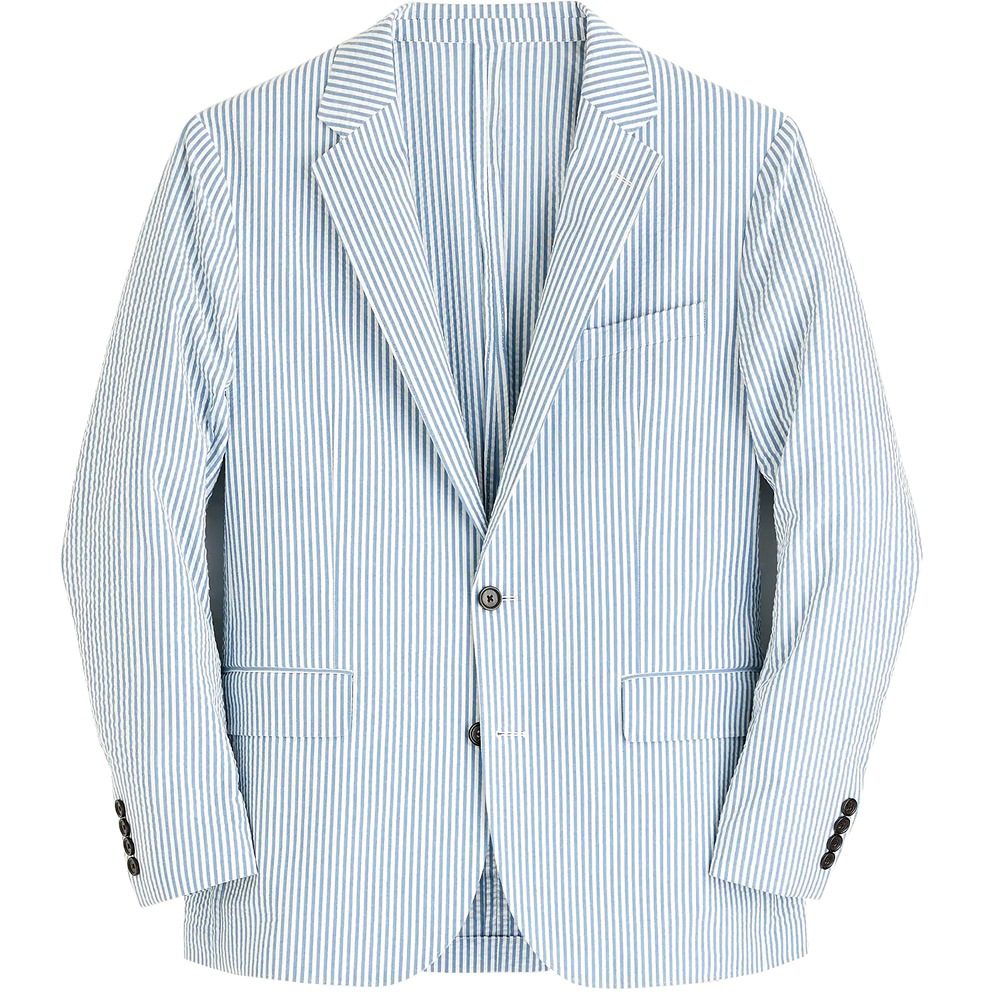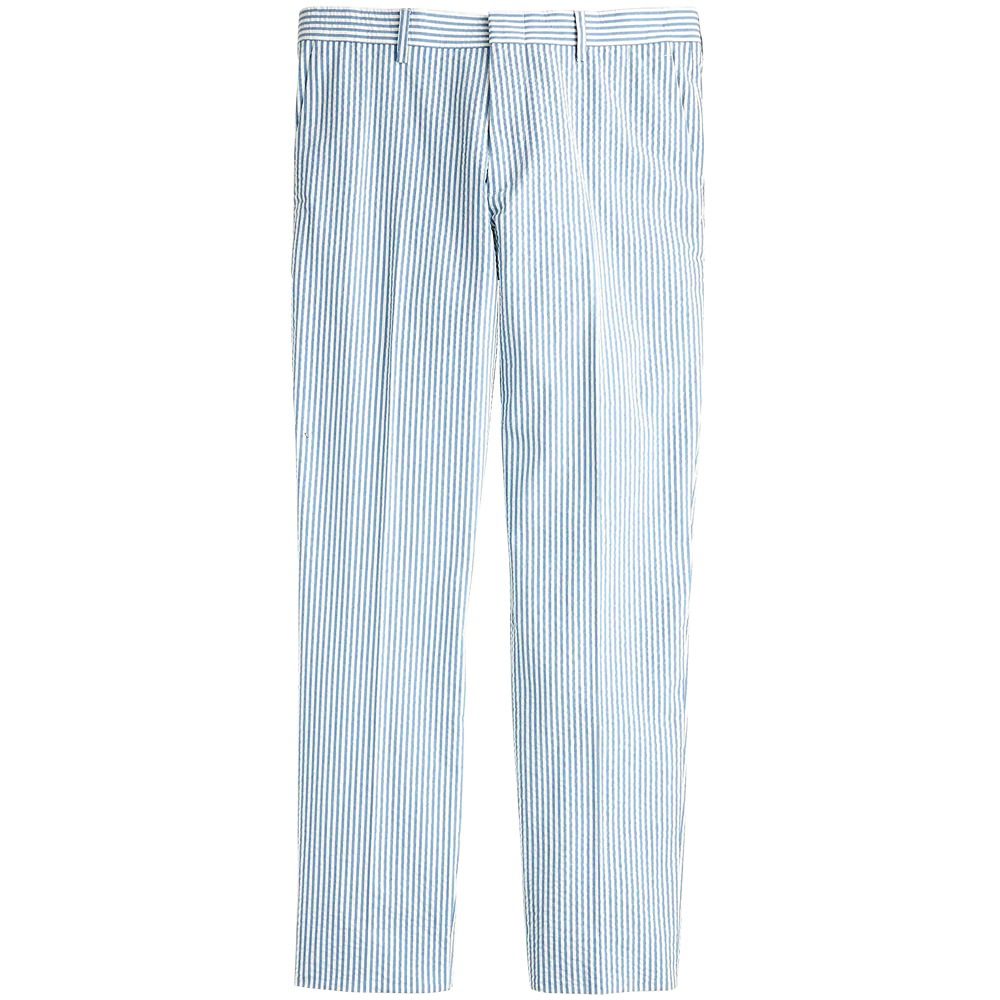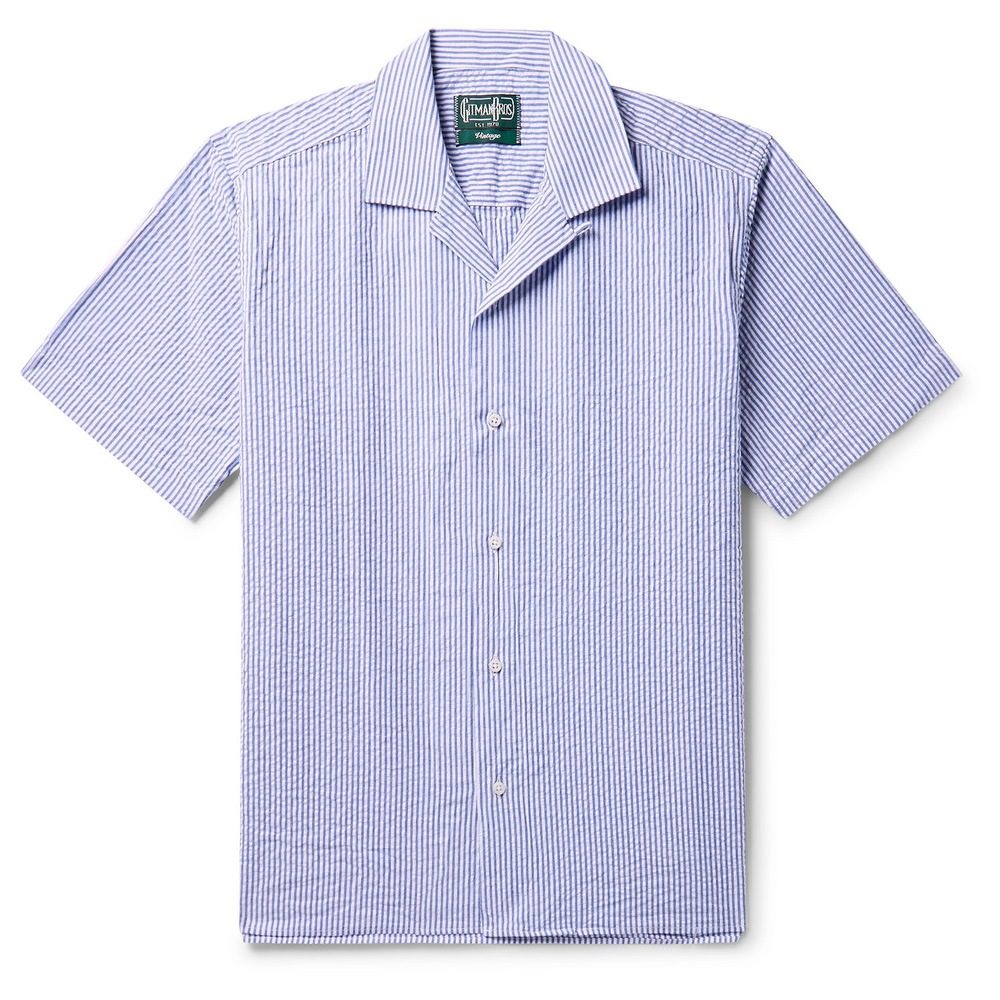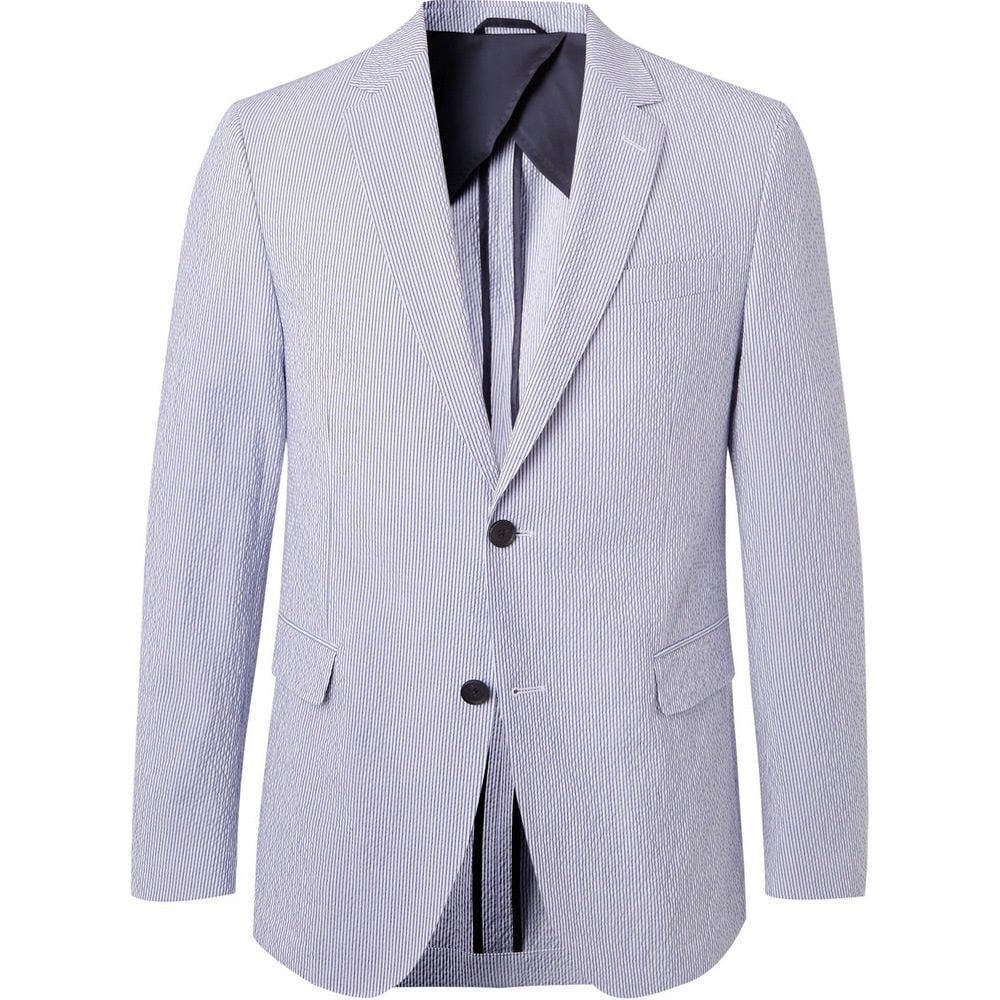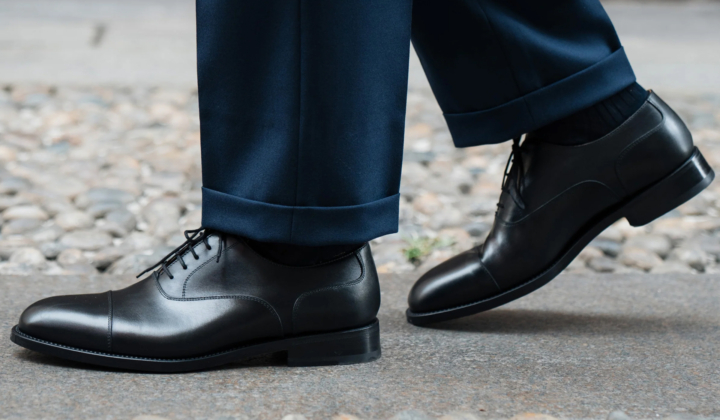Keep Your Cool: Why Every Man Needs Seersucker In His Summer Wardrobe
Each June in the US everyone downs tools and strips off anything stylishly woollen or polyester to take part in National Seersucker Day. Of course, very few people do anything of the kind, this being more an industry marketing exercise. But, still, it’s one in the eye for denim, which is yet to be celebrated in such a way. Yet perhaps seersucker needs it.

Mr P. Seersucker Blazer & Matching Shorts | Photography by Mr Stefan Heinrichs for MR PORTER
Aside from its somewhat unappealing name – it comes from the Persian “shir” or “shekar” for “milk and sugar” – not everyone has been able to get their heads around the fact that this cotton fabric is permanently creased, even if that is in neat vertical rows of an alternating bobbly textured and smooth finish (hence “milk and sugar”). It’s this characteristic which gives seersucker its renowned functionality: the material’s natural puckering ensures it stands away from the body, thus allowing greater air circulation and keeping you cooler. It also allows seersucker to hold its shape, no matter how humid it gets. And since it’s crumpled anyway, it’s hard to actually look crumpled wearing it – something that also makes it good for travelling with/in.
All of the aforementioned qualities mean that seersucker is almost exclusively identified with high summer, and is most often – and most traditionally – found in stripes of white and pale blue.
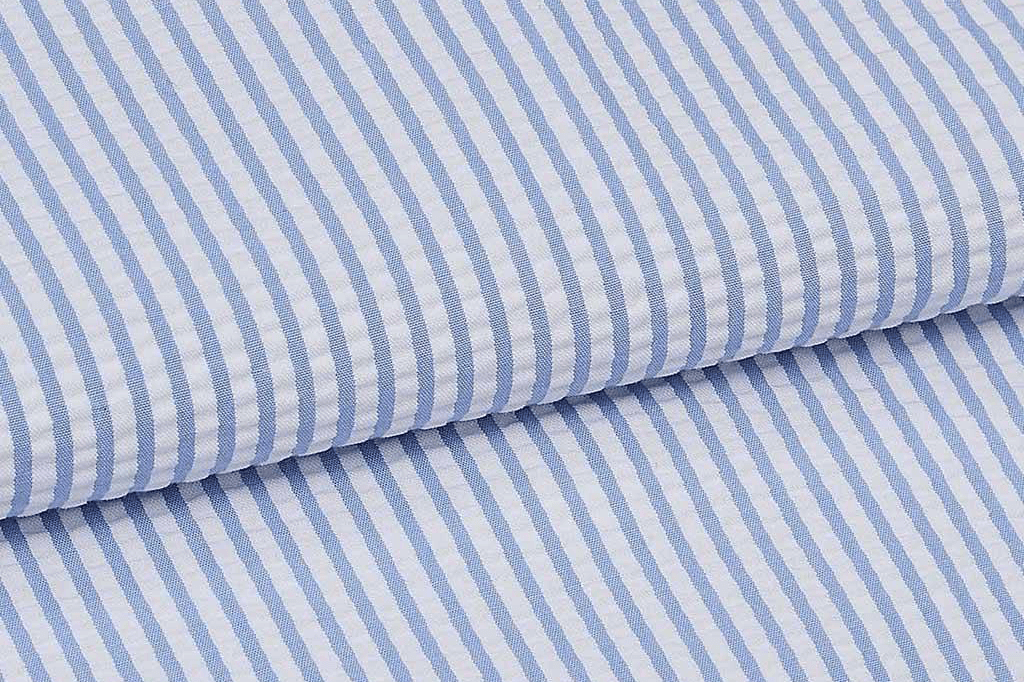
A close up of this rather unique fabric
Origins
Far from a fleeting fashion trend, seersucker has been a staple of the southern gentleman’s wardrobe in the US since 1909, when Joseph Haspel, a New Orleans haberdasher – on the look out for some kind of cool, lightweight but still robust fabric from which he could tailor a two-piece suit – is said to have reimagined it with a mill in Louisiana; we say “reimagined” because the fabric actually originated in colonial-era India, where it gets very, very hot.

During the film To Kill a Mockingbird (1962) actor Gregory Peck as lawyer Atticus Finch can be seen stylishly sweating it out in a three-piece seersucker suit
Seersucker went mainstream thanks to the film To Kill a Mockingbird (1962), which saw Gregory Peck’s lawyer Atticus Finch stylishly sweating it out in a three-piece seersucker suit. Within a few years the seersucker suit was the go-to choice for members of the Senate. Peck, by the way, was fitted out by Haspel’s son, the imaginatively named Joseph Haspel Jr. One story goes that his father once rushed into the sea in a seersucker suit to demonstrate how, within just a few hours, it was dry again.
National Seersucker Day
Seersucker is still considered the (sometimes) acceptable face of hot-weather dressing for the political classes in the US, even long after the advent of air conditioning put a dent in demand. Yes, National Seersucker Day – originally Seersucker Thursdays – was invented in 1996 by a Mississippi Republican by the wondrous name of Trent Lott, in a bid to revive an alternative to the usual array of dark, perspiration-inspiring tailoring. The Senate “needs to lighten up and loosen up,” he claimed.
Entertainingly, in 2013 a Missouri state senator added an amendment to a bill that would ban citizens above the age of eight from wearing seersucker suits. “Adults,” he reckoned, “look ridiculous in seersucker suits”. Two years later The Republican National Committee instructed its communications officers not to wear the fabric on TV – and not because those stripes bothered viewers’ eyes. Perhaps it had come to be deemed as too conservative, too patrician.
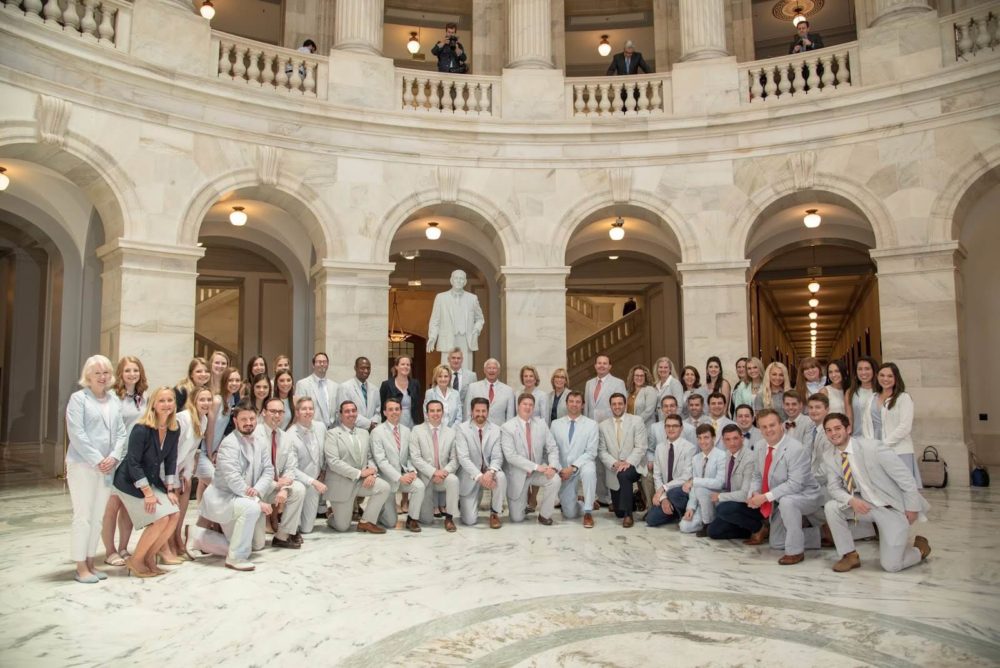
The US Senate on June 11 for National Seersucker Day. Originally started by Mississippi Senator Trent Lott in 1996 ending in 2012. But revived by Senator Bill Cassidy of Louisiana in 2014.
Who wore seersucker well
Certainly, despite this mixed bag of support, seersucker actually has its origins as a working man’s fabric, which is said to have caused some confusion when men of class and taste took to it. “I have been wearing coats of the material known as seersucker around New York lately, thereby causing much confusion among my friends,” the journalist Damon Runyon noted in 1945. “They cannot decide whether I am broke or just setting a new vogue.”
Students at Princeton – one of the US’s foremost educational establishments – had been wearing the fabric for some time though, kind of ironically; it was this that encouraged the ever trend-vigilant menswear retailer Brooks Brothers to make it a fashion in the northern states.

The preppy-loving Miles Davis wearing a seersucker blazer
Within a decade of Runyon’s comment, the crumpled cotton was a main component of traditional Ivy League preppy style, alongside penny loafers, chinos and Oxford shirts. The fabric was good enough for the Duke of Windsor, who wore it while holidaying on the Italian coast – the royal nod of approval ensuring that most doubts about the fabric were dispelled. That the preppy-loving Miles Davis also wore a seersucker jacket on the cover of his At Newport 1958 album just about guaranteed it’s cool status, both figuratively as much as it was literally.
How To Wear Seersucker Today
But is it still ‘cool’ today? The fabric, it seems, never seems to polarise opinion, despite its eminent utility. Seersucker suits are hard to pull off and, for that matter, find. In the US tradition has it that such a garment should only be worn between Memorial Day in May and Labor Day in September, which is a fun rule for sticklers to observe, but which goes largely ignored by the majority of its fans. What it’s hinting at, of course, is that it is strictly for smart casual or business casual wear in hot weather – and if you have an event to go to when the temperature is up and smart attire is essential, it’s hard to go wrong with it. It looks great. But then how often is that? The seersucker suit is one of those “nice to have” garments, rather than an essential.
In contrast, a seersucker camp collar shirt or an unlined seersucker blazer (because a lined seersucker jacket misses the point entirely) certainly works casually through the hottest summer months, regardless of the colour of the stripe.
They’re both garments you’ll probably hesitate to buy. They’re also both garments you’ll return to year after year whenever the sun comes out. Team with matching shorts/trousers or lightweight cotton chino shorts or trousers for a more subtle introduction to the fabric.

